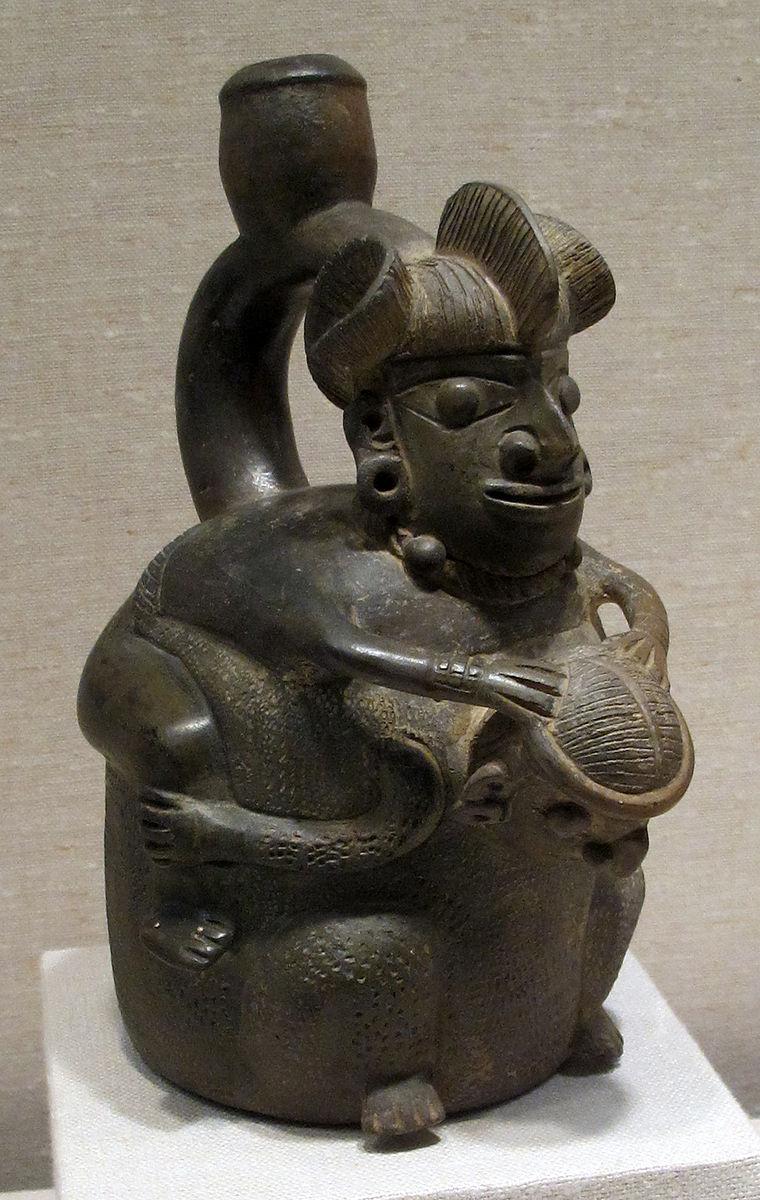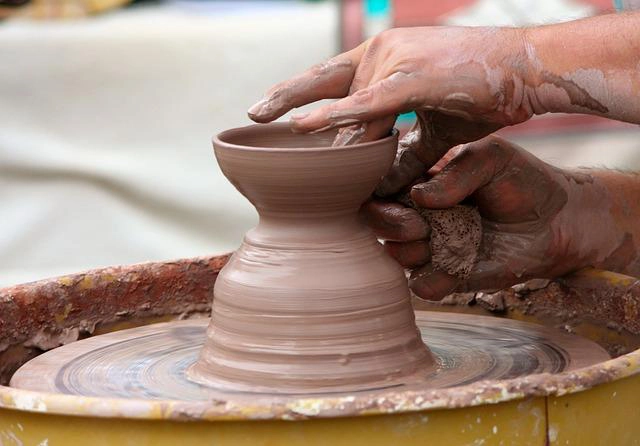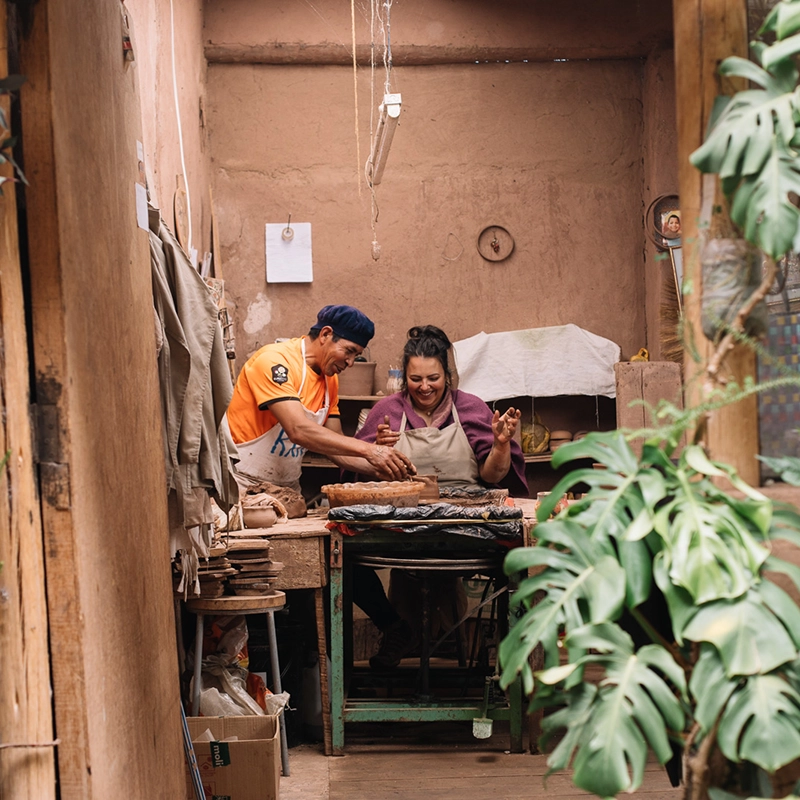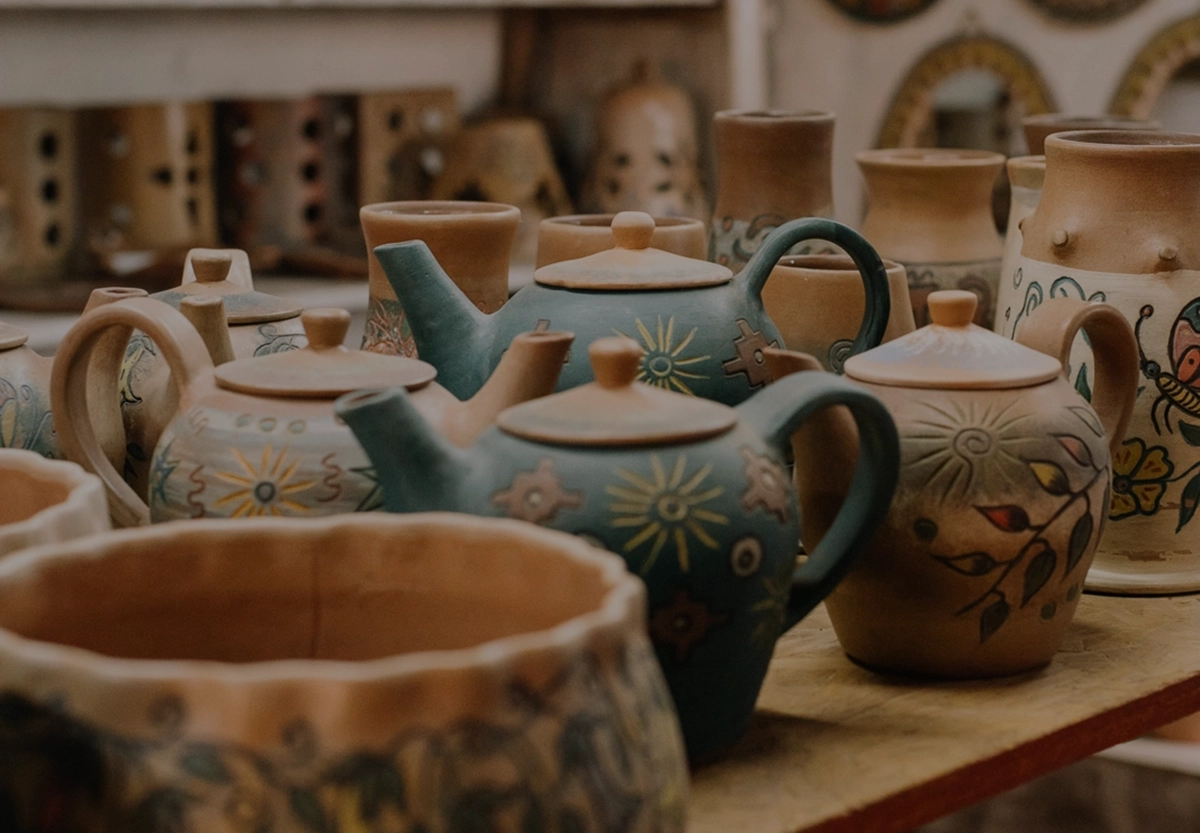The ancient history of Peruvian ceramics begins with the Chavín culture, which flourished more than 5,500 years ago.
Although they may have been the first ceramists in the place we now call Peru, the Chavín certainly were not the last. For thousands of years after them, civilizations across this land developed unique methods for fashioning clay into ceremonial, religious, and practical pieces.
The traditions and stylistic influences of these cultures are still evident in Peru’s pottery and ceramics, and these remnants of the ancient world are a large part of the allure of Cusco.
Want to know more about the deep roots of Peruvian ceramics and how they manifest today? Keep reading and satisfy your curios-ity.
Pre-Inca Peru Ceramics and Pottery
Many visitors think of the Inca as Peru’s most important historic civilization. The truth is that many diverse and ancient civilizations thrived here long before the Inca, and many contributed to the traditions and customs that are still alive today.
Ceramics were, and still are, an integral part of Peru’s history and culture. Below, we explore a timeline of Peruvian ceramics and the most significant civilizations contributing to it.
The Chavín
Between 1,000 and 300 BC, the Chavín roamed the Northern Andean highlands, and it’s believed that they were the first Andean civilization to create fine pottery. They shaped many of their ceramics in the form of mythical creatures and the jaguar god, painting them with geometric patterns in subtle reds and browns.
The Chavín developed the stirrup spout vessel, a type of jar that was used for ritual burials and for storing fermented corn beer known as “chicha”. These vessels became common among several Andean cultures thereafter. Great artistic and technical skill went into their creation, and they were often formed to resemble stylized human, animal, and plant forms as well as supernatural beings.
The Paracas
Along the Southern coast of what is now Peru, the Paracas existed from 800 to 100 BC. This culture built on the styles developed by the Chavín but used far brighter colors and applied patterns using incisions and carvings.
The most notable achievement of Paracas pottery was the introduction of the double spout-and-bridge vessel. This was an enhancement of the stirrup that began as a drinking vessel but later took on artistic sculptural forms as their technology advanced.

Moche ceramics, renowned for their intricate designs and exquisite craftsmanship, provide a fascinating glimpse into the ancient Moche civilization and their artistic traditions.

Nazca mummies provide intriguing insights into the burial practices and beliefs of the ancient Nazca civilization in Peru.
The Nazca
Though distinct from the Paracas culture, the Nazca emerged from this older civilization through a complex process of co-existence and assimilation. From 100 BC to 800 AD, the Nazca became the dominant culture of Peru’s southern coast and they were masters of painting ceramics.
The Nazca perfected 13 distinct color slips, which was the largest color range of any ancient civilization in the Americas. Their pottery was mostly reserved for rituals, burial offerings, and decoration, and they combined their wide array of colors with bold designs to communicate cultural ideas and religious practices.
The Moche
The Moche culture that lived on the northern Peruvian coast from 100 to 700 AD were political, ideological, technological, and artistic innovators. Their ceramics are considered the most impressive of all Peru’s ancient civilizations.
Moche pottery documents war, agriculture, metalwork, weaving, and, perhaps most notably, erotica. They were the first to mass produce pottery with the use of molds, and each piece was individualized with realistic surface painting.
The realism of their painting was unique to the Moche culture. It’s believed that facial expressions and emotions, portraits of actual individuals, and portrayals of important social activities were used to pass down general knowledge and values.
Chancay, Chimú, Lambayeque, and Ica
From 900 to 1400 AD, the most notable ceramicist cultures were the Chancay, Chimú, Lambayeque, and Ica. During this period, mass production was favored over individualized works, and ceramics were mass produced for the middle class, not just the nobility.
Both the Lambayeque and Chimú cultures worked predominantly with blackware ceramics, the former preferring press-molded reliefs and the latter featuring ornamental zoomorphic figures. Ceramics from the Chancay were mostly black-on-white, elongated oval jars and female effigies that were unpolished and hastily painted.

Pre-Inca ceramics reveal the artistic expression of ancient civilizations in Peru, offering a glimpse into their rich cultural heritage and craftsmanship.
The Ica were by far the finest pottery makers of this time. They continued to handcraft their ceramics and adorn them with abstract geometric designs. They also painted in a wide range of colors, including maroon, purple, orange, and red.
Peru Ceramics and Pottery from the Inca
By the time the Inca became the largest empire in pre-Columbian America in the 15th and 16th centuries, pottery production was well-developed. Because they absorbed the cultures and practices of the territories they conquered, Inca pottery was a mélange of many antecedent civilizations.
For example, the most common vessel in this era was the stirrup spout, which originated from the Chavín culture thousands of years prior. The Inca also mass produced their more practical pottery using molding processes developed by earlier civilizations. These ceramics were thicker and not as elaborate as huaco, which were high quality, elaborately decorated pieces used for ceremonial and ritual purposes.
What distinguished Inca ceramics was the lack of human figures and faces. Instead, they used geometric patterns and shapes, such as animals, birds, and felines, painting them with a polychrome technique that was also inherited.

Pottery and ceramics play a significant role in the artistic and cultural heritage of Peru.
Peru Ceramics in Modern Times
During the Spanish conquest of the Inca, the government and religious systems were dismantled, and artifacts were destroyed. Although the Catholic conquistadors sought to eradicate the Incan influence, the indigenous people managed to keep some of their traditions alive.
Today, the ceramic motifs of the ancient past are alive and well in many parts of the Andes, especially in and around Cusco. Though combined with techniques and styles that arrived with the Spanish during colonization, Peruvian ceramics are an important expression of the link between modern Andean people and Incan culture.

The “toritos de Pucará” are traditional Peruvian ceramic bulls that symbolize protection and good fortune.
Nothing serves as a better example of this blending of cultures than the Toros Cusqueños (Cusco Bulls). When the Spanish arrived in America, the bulls they brought with them became an important part of traditional festivals. The Toros Cusqueños, sometimes called Pucara bulls, are clay representations of these bulls.
Often found as decorative pieces in Peruvian homes and in pairs on the roofs of rural houses, the fine details carry deep ancestral meaning. The hole placed at the height of the bull’s sacrum represents fertilization while the handle represents marriage and union of men and women. The lines and shapes painted onto the bulls are also purposeful, often portraying spiral forms that are symbolic of Pachamama (Mother Earth) and the spiral of life.
Make your Own Peru Pottery with Curios
From the Chavín to the Inca, ceramics and pottery played an important role in the ceremonial, religious, and practical activities of pre-Columbian Peru. Today, Peruvian ceramics serve as an important link between the ancient civilizations that once thrived in this part of the world and their descendants.
Nowhere else are these traditions more evident than Cusco and the Sacred Valley. The artisan ceramicists of these rural areas are reviving the techniques and styles of their ancient past, and it’s this profound connection that captivates those who partake in the Curios ceramics workshop.
Cusquenian ceramic artist, Sergio, takes visitors on a journey through history while they make their own handmade craft from Peru. Click here to learn more about this experience and secure a spot while you’re exploring Cusco and the Sacred Valley.

References
The Pottery of Ancient Peru – Enigma Blog.
Peruvian Pottery,
Ceramics of indigenous peoples of the Americas – Wikipedia
Inca Pottery | Discover Peru
Ceramics of indigenous peoples of the Americas – Wikiwand
Fall in love with the symbolism of Torito de Pucará | PeruRail
Once upon a time…The Pucará bull | Latitudes World Décor


